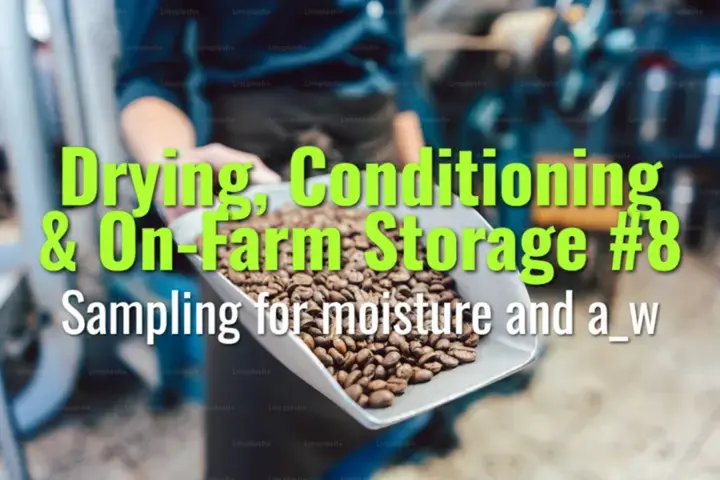Sampling for moisture and a-w
This topic explains how to properly sample coffee for measuring moisture content and water activity (a-w), why representative sampling is critical, and how these tests ensure stability and quality.
- Coffee Basics Nerds
- 2 min read
Article 8 of 12 in Drying, Conditioning & On-Farm Storage/

Why Sampling Matters
- Coffee beans dry unevenly across beds, bags, or warehouses.
- Taking representative samples prevents false readings.
- Ensures coffee is within the safe range: 10–12% moisture and 0.55–0.65 a-w.
Moisture Sampling
- Tools: Handheld moisture meters.
- Method:
- Take beans from multiple locations (top, middle, bottom of bags or piles).
- Mix samples to create a composite for testing.
- Calibrate meters regularly to maintain accuracy.
Water Activity (a-w) Sampling
- Tools: Water activity meters (more precise, lab-grade).
- Method:
- Seal beans in the chamber of the device.
- Device measures vapor pressure equilibrium.
- Readings confirm microbial stability (<0.65).
Best Practices for Sampling
- Frequency: Check at drying beds, before storage, and periodically during storage.
- Lot separation: Sample each lot individually to maintain traceability.
- Composite approach: Combine multiple small samples for representative results.
- Avoid bias: Don’t sample only surface beans—include deeper layers.
Risks of Poor Sampling
- Overestimation: Leads to under-dried beans → mold risk.
- Underestimation: Leads to over-drying → brittle beans, flavor loss.
- Misleading results can cause rejection at export or roasting.
Market Relevance
- Specialty buyers often request documented moisture and a-w readings.
- Certifications may require proof of sampling protocols.
- Data adds credibility, showing commitment to quality.
Lasting Importance
Sampling for moisture and a-w is a critical quality control step in drying and storage. Proper representative sampling ensures coffee is safe, stable, and high-quality, protecting both flavor integrity and farmer reputation in specialty markets.
You might also like:
- Tags:
- Lasting Importance
- Best Practices
- Quality Control
- High Quality
- Matters Coffee
- Coffee Beans
- Specialty Markets
- Specialty Buyers
- Water Activity
- Flavor Integrity
- Risks Poor
- Moisture Meters
- Drying Beds
- Drying Storage
- Small Samples
- Ensures Coffee
- Quality Lasting
- Farmer Reputation
- Mold Risk
- Moisture Readings